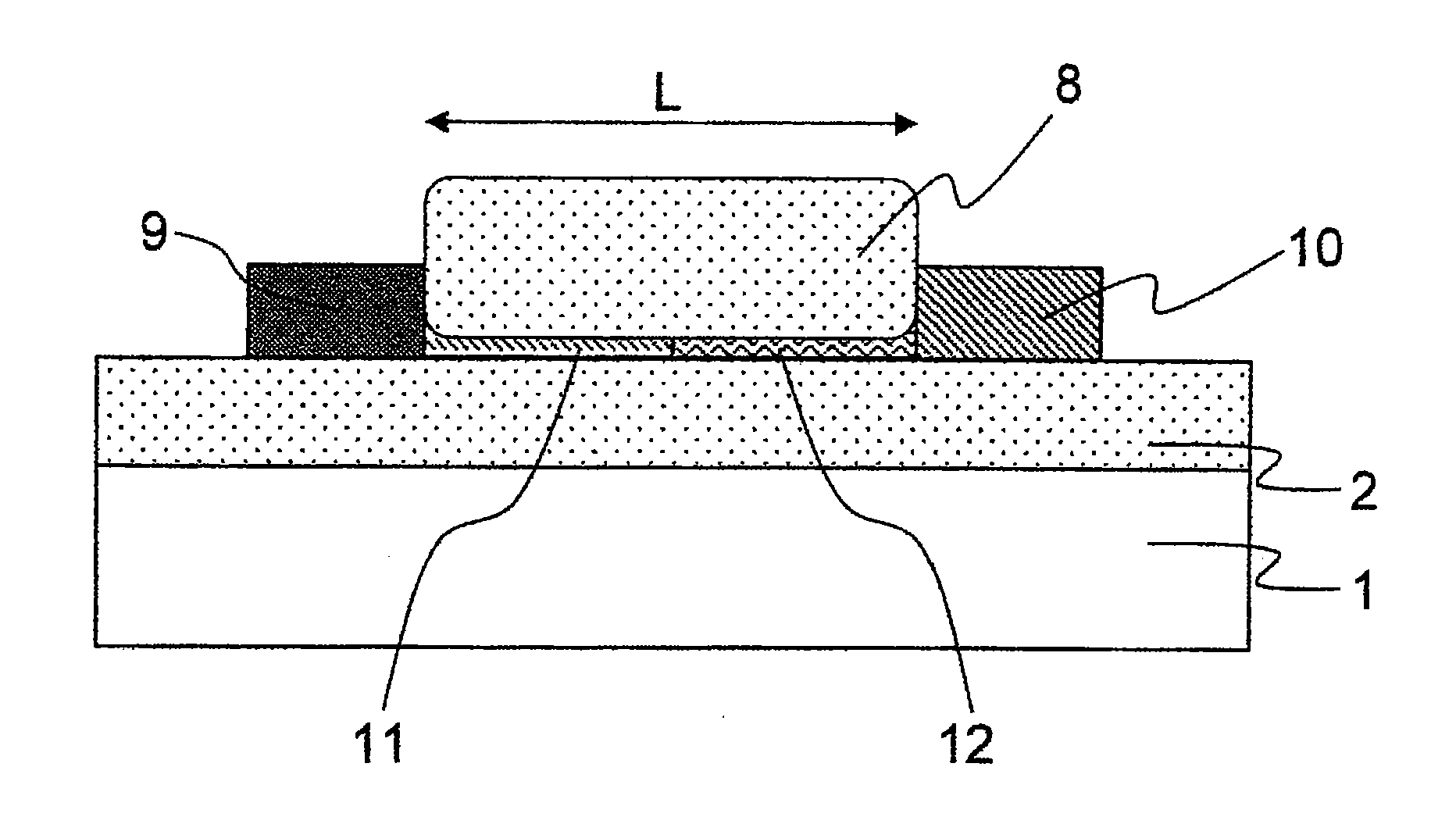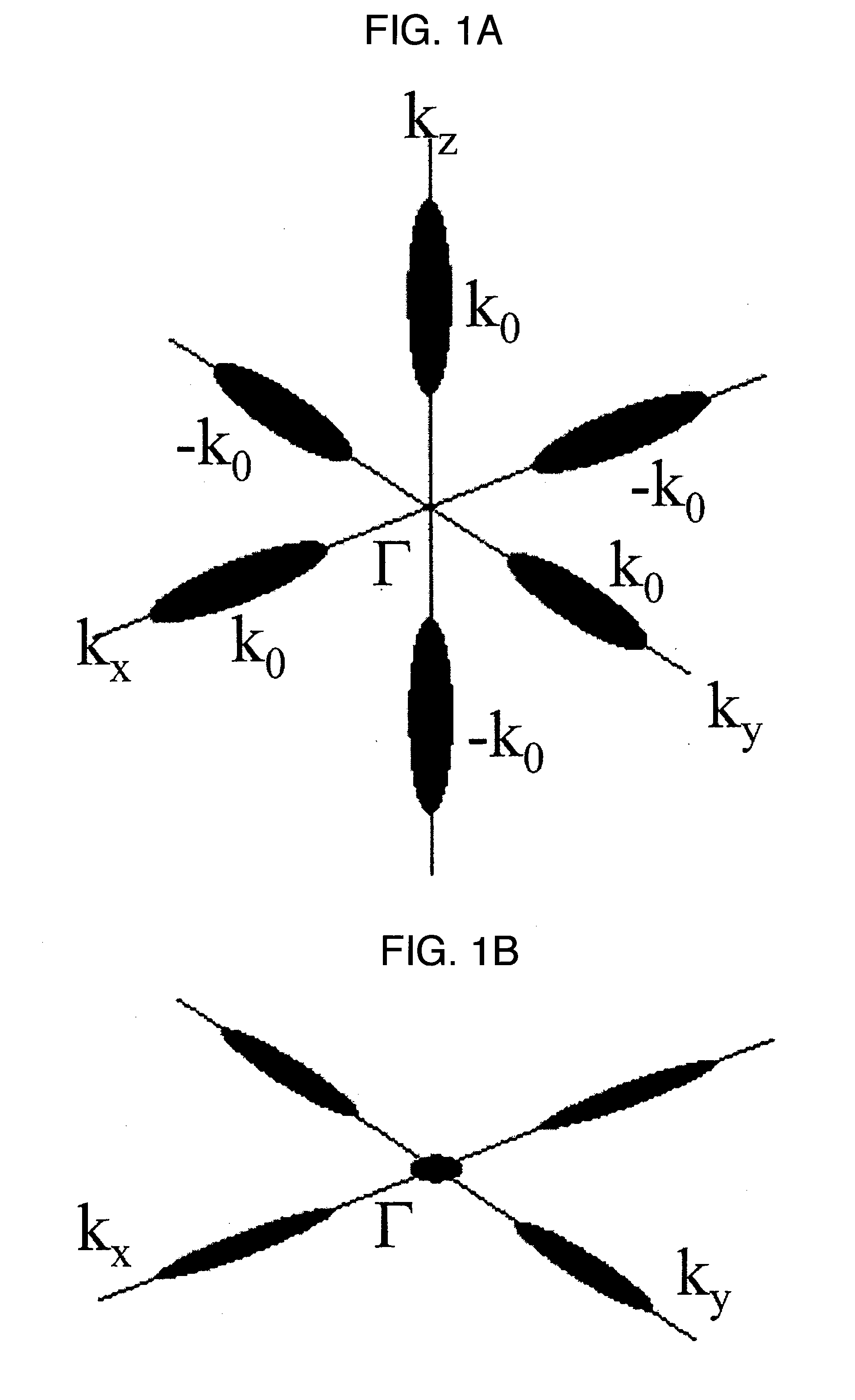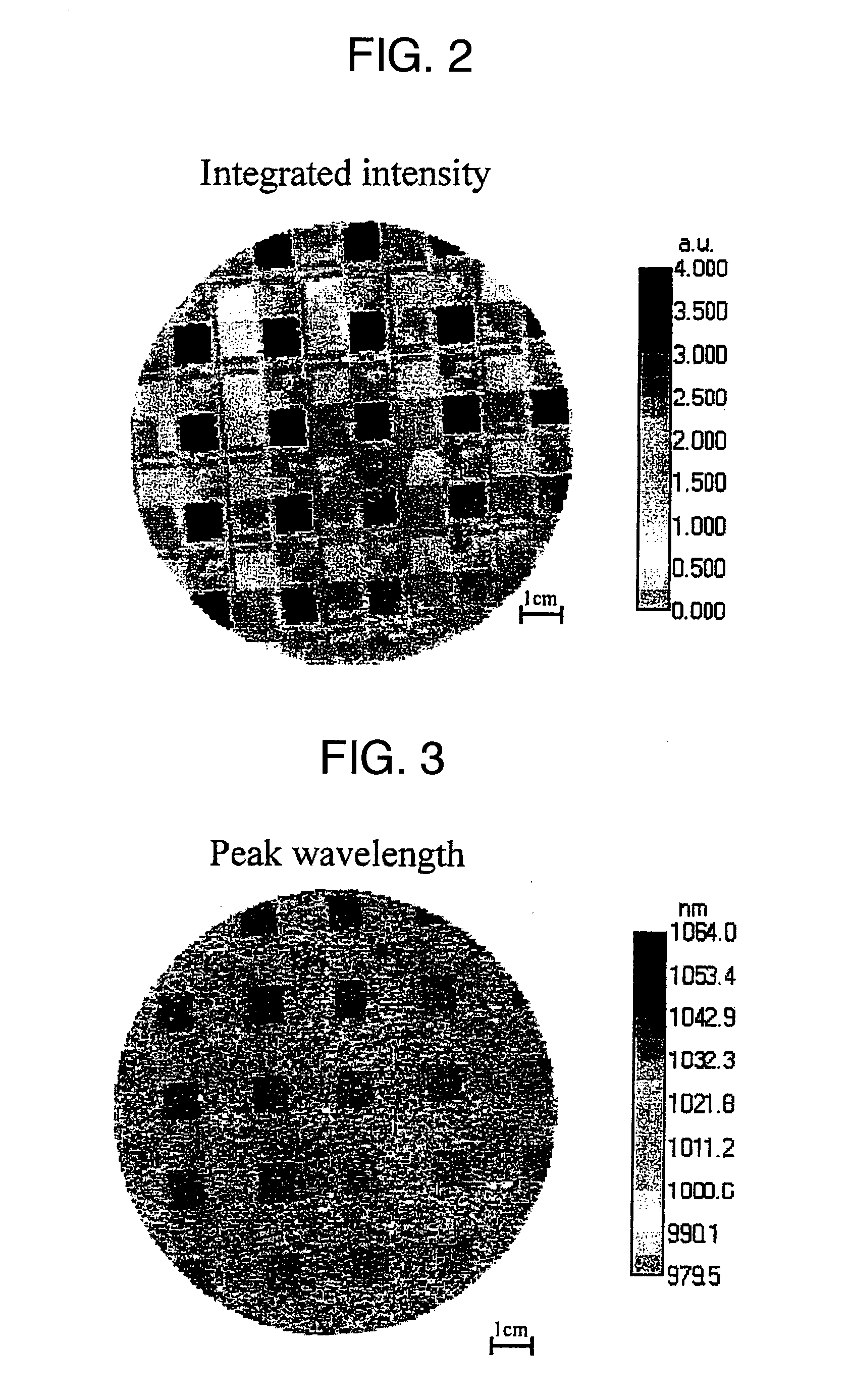Silicon light emitting diode, silicon optical transistor, silicon laser and its manufacturing method
a light-emitting diode and silicon technology, applied in the direction of lasers, semiconductor lasers, solid-state devices, etc., can solve the problems of low probability of such a phenomenon, high efficiency of silicon light-emitting diodes, and extremely poor light-emission efficiency of silicon, so as to achieve easy manufacturing and high efficiency
- Summary
- Abstract
- Description
- Claims
- Application Information
AI Technical Summary
Benefits of technology
Problems solved by technology
Method used
Image
Examples
embodiment 1
[0115]In the present embodiment, the disclosure will be made below concerning a high-efficiency light-emitting device and a fabrication method of fabricating the high-efficiency light-emitting device. Here, the above-described light-emitting device is formed on a Silicon-On-Insulator (SOI) substrate by a method which allows the light-emitting device to be easily formed by using the ordinary silicon process.
[0116]FIG. 5A to FIG. 5H illustrate cross-sectional structures in the fabrication steps' sequence. Also, FIG. 6A to FIG. 6H illustrate schematic diagrams in the fabrication steps' sequence seen from the topside of a SOI substrate. Here, FIG. 5A to FIG. 5H are transverse-direction cross-sectional diagrams of FIG. 6A to FIG. 6H, respectively. For example, FIG. 5A illustrates a cross-sectional structure cut out by a cross section 13 in FIG. 6H (1). Also, FIG. 7 illustrates a schematic diagram of a cross-sectional structure cut out by a cross section 14 in FIG. 6H (1). FIG. 5H, FIG. 6...
embodiment 2
[0155]In the present embodiment, the disclosure will be made below concerning an optical interconnection and a fabrication method of fabricating the optical interconnection. Here, the above-described optical interconnection is based on information transmission performed by the light using the light-emitting device according to the first embodiment, which emits the light with a high efficiency on the chip using silicon or the like.
[0156]First, a silicon light-emitting diode is fabricated in accordance with fabrication steps similar to those in the first embodiment. In the silicon light-emitting diode in the present embodiment, width W of the extremely-thin silicon film is equal to 100 μm, and the length is equal to 100 μm. Also, simultaneously with the fabrication of the silicon light-emitting diode, a device illustrated on the upper side in FIG. 11 is fabricated in the region to which the ion implantation of the impurities has been not applied and in which the SOI layer has been not...
embodiment 3
[0170]In the present embodiment, the disclosure will be made below concerning a light-emitting field-effect transistor whose basic configuration element is a IV semiconductor, and whose light-emission intensity or light-emission wavelength is controllable with the gate voltage, and a fabrication method of fabricating the light-emitting field-effect transistor.
[0171]The light-emitting field-effect transistors according to the present embodiment can be easily integrated on a substrate such as silicon. Accordingly, the light-emitting field-effect transistors make it possible to configure a logic circuit using light.
[0172]In the present embodiment, first, the silicon light-emitting diode is fabricated in accordance with fabrication steps similar to those in the first embodiment. Moreover, subsequently, silicon dioxide (not illustrated) attached on the surface of the silicon substrate 1 opposite to the surface adjacent to the BOX layer 2 is eliminated by being washed away using a solutio...
PUM
 Login to View More
Login to View More Abstract
Description
Claims
Application Information
 Login to View More
Login to View More - R&D
- Intellectual Property
- Life Sciences
- Materials
- Tech Scout
- Unparalleled Data Quality
- Higher Quality Content
- 60% Fewer Hallucinations
Browse by: Latest US Patents, China's latest patents, Technical Efficacy Thesaurus, Application Domain, Technology Topic, Popular Technical Reports.
© 2025 PatSnap. All rights reserved.Legal|Privacy policy|Modern Slavery Act Transparency Statement|Sitemap|About US| Contact US: help@patsnap.com



